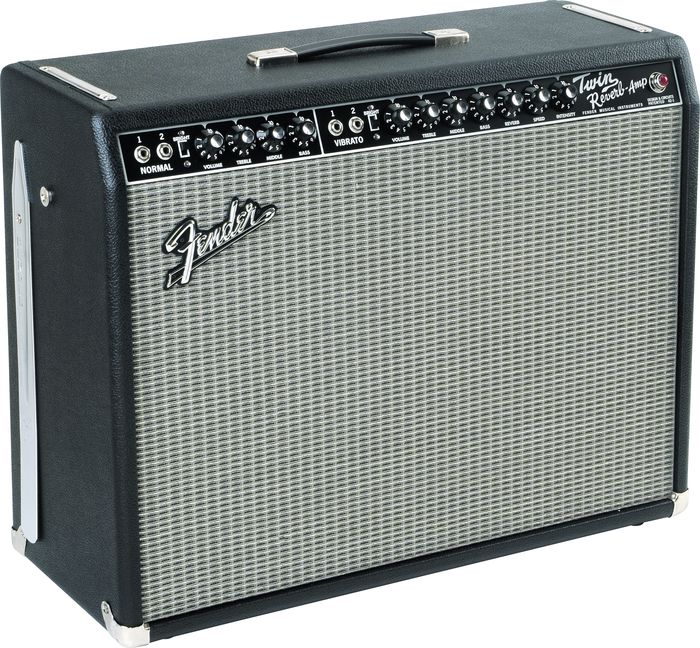Table of Contents
Quality and Cost Considerations
Beginners Rejoice!
Pick Your Instrument
Combo or Head/Cab?
The Basics of Power Boosting
To Tube or Not to Tube
Get the Best of Both Worlds
So, Which Will It Be?
Use the Proper Channels
What’s My Wattage?
With Great Power...
Cause an Effect!
Speakers: Where the Rubber Meets the Road
More to Explore
The Fender Reissue '65 Twin Reverb is a tube-driven guitar amp that’s a favorite among players seeking vintage tone.
Quality and Cost Considerations
The amplifier you choose has a big role in producing the sound you want. Your instrument – whether it's a guitar, bass, or keyboard – produces only a weak electronic signal on its own. It’s the amp's job to boost that signal in order to drive the speakers, which ultimately project your music.
Since your electric instrument's sound reaches the world only by virtue of the amp you play through, it's important that you make a good, informed choice. The quality and capabilities of your amplifier should be a good match for your instrument.
A lot of guitarists feel you should spend at least as much on your amp as you do on your guitar. And although that's not exactly a hard and fast rule, the basic idea is spot on: you don't want to compromise your instrument's great sound with an under-performing amp.
Beginners Rejoice!
Today's amplifiers are so well made and affordable it's hard to go wrong. There are a large number of entry-level amps that are super-easy to operate and provide all the features you need. On top of that, when you buy your amp at Musician’s Friend, you get a generous return policy.
Use this guide to make your search even easier by learning a few of the basic features of instrument amplifiers.
Pick Your Instrument
Amplifiers are optimized for the different types of instruments that most commonly use them: electric guitars, acoustic guitars, electric bass guitars, and electronic keyboards.
Electric guitar amplifiers are generally the most sophisticated of all the types. Of course, the universal popularity of the guitar has a lot to do with this. But just as important is the fact that a critical component of the sound most people want out of an electric guitar—a rich, musical distortion—comes from the amp alone. Many guitar players also look to their amp to produce effects such as reverb as well as controls to shape their tone.
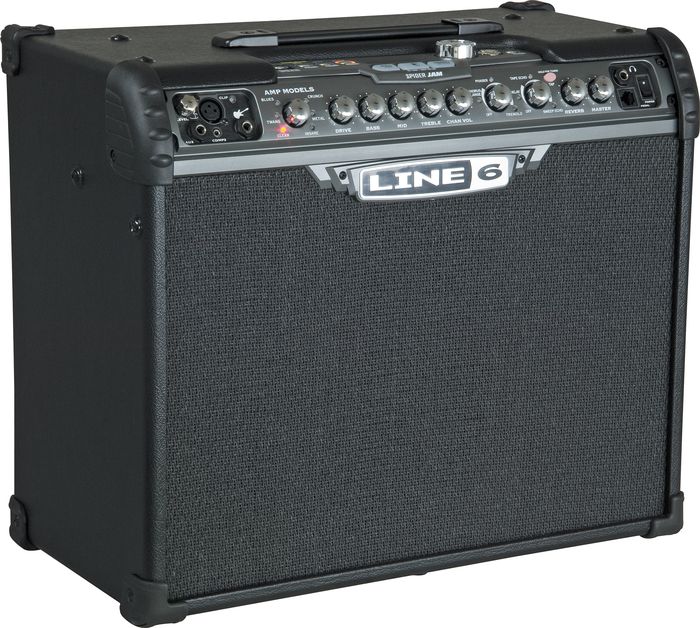
The Line 6 Spider Jam digital guitar amp packed with hundreds of amp models, effects, backing tracks, and tone settings based on artist’s favorites and various music genres.
Acoustic guitar amplifiers are designed to reproduce the full range of the guitar’s sound from crystalline trebles to rounded bass notes. Distortion is exactly what these amps aim to avoid. Many acoustic guitar amps have separate inputs for a microphone and the acoustic guitar’s on-board pickup. Most are combo amps that contain their own speakers, including larger bass drivers and smaller high-frequency tweeters.
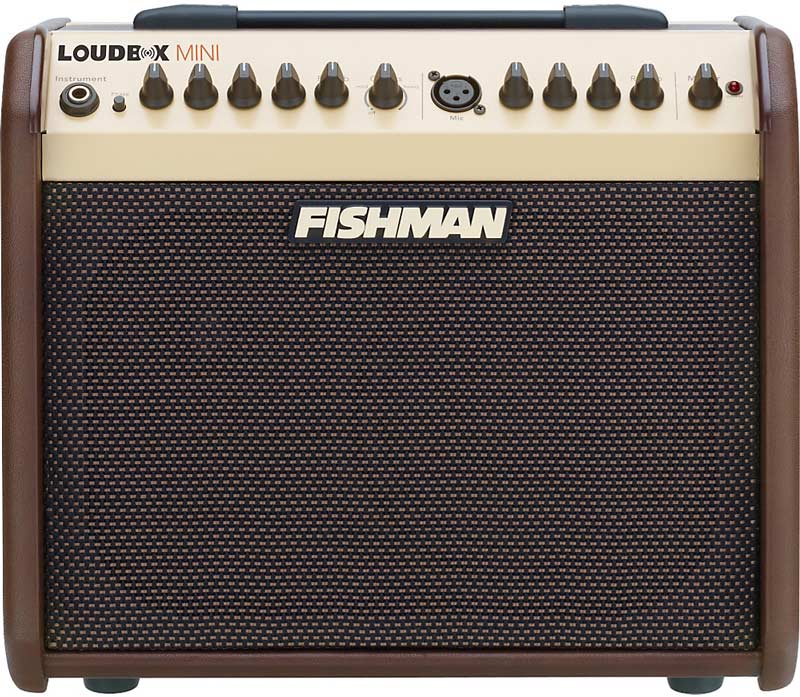
The super-portable Fishman Loudbox Mini puts out a surprisingly powerful 60W. Superb fidelity plus instrument and microphone inputs make it ideal for the singer/guitarist who performs in smaller venues.
Take a quick video tour of the mighty Loudbox Mini.
Go deeper with our Acoustic Guitar Amplifier Buying Guide.
Bass amplifiers are usually much less oriented toward effects such as distortion, and more focused on accurately replicating the low, sonorous tone those fat bass strings generate. They produce more power and drive larger speakers to get the job done right.
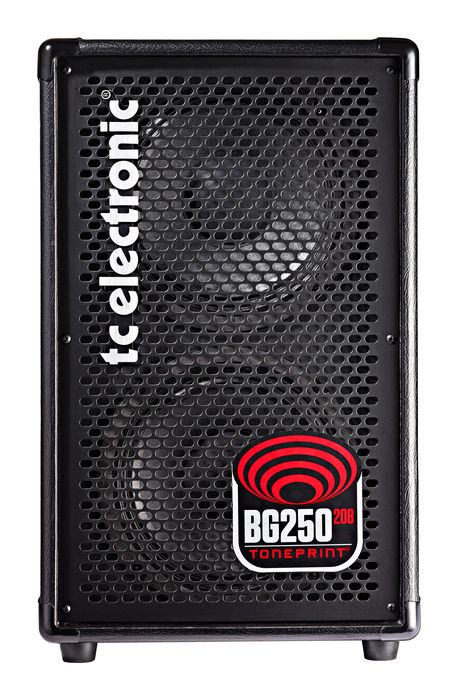
The BG250-208 Bass Combo Amp from TC Electronic has a built-in tuner and effects, plus it’s compatible with external effects beamed from your smartphone.
Dig into all things bassic with our How to Choose the Right Bass Amp Rig.
Keyboard amplifiers replicate the sounds produced by the keyboard as accurately as possible with no coloration whatever from the amplifier. Many include XLR inputs for microphones, and their features usually allow them to serve as basic PA systems.
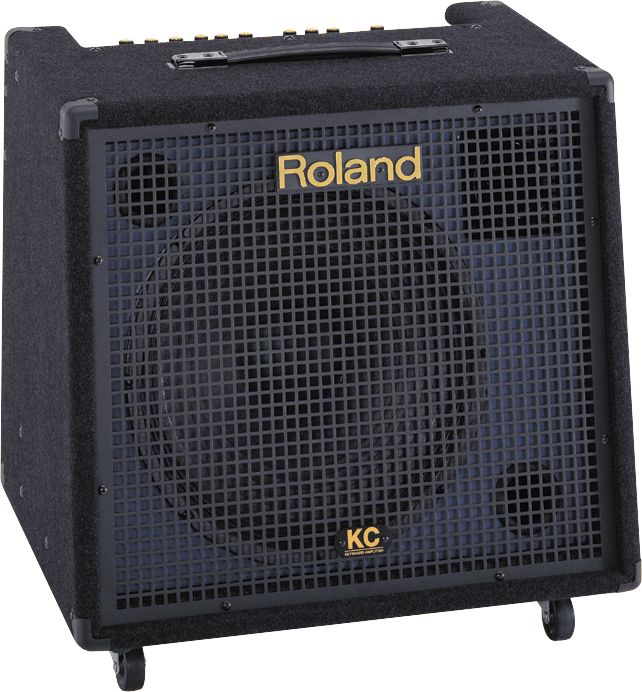
Roland’s KC-550 Keyboard Amplifier has 4-channel operation for maximum flexibility, and 180W power driving a 15” speaker plus tweeter for powerful, articulate sound.
Delve deeper into digital piano and synth amplification with our Keyboard Amplifier Buying Guide.
Portability vs. Power: Combo or Head/Cab?
A combo amp is most common type of musical instrument amplifier. It’s a single box that contains the amplifier and one or more speakers. The combo amp is handy to transport and easy to operate: simply plug the combo amp into the wall, plug your instrument into the amp, and play.
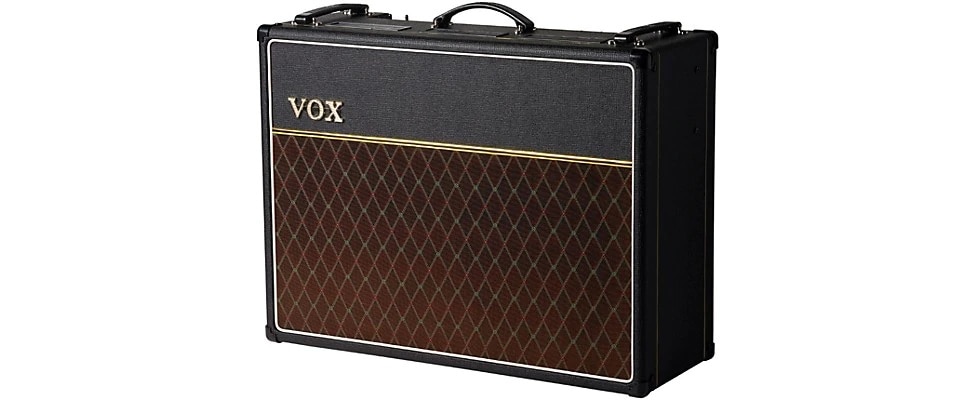
The Vox Custom AC30C2 guitar combo amp drives a pair of 12” Celestion Greenback speakers with 30W of all-tube output that delivers classic British vintage rock tone.
An amp head contains all components of the amplifier but does not have its own speakers. Instead, it connects to a speaker cabinet through speaker cables. Often, the amp head's manufacturer has designed a special speaker cabinet designed for the amp head, which you usually purchase separately. In some cases amp heads and cabinets are sold together as guitar amplifier stacks.
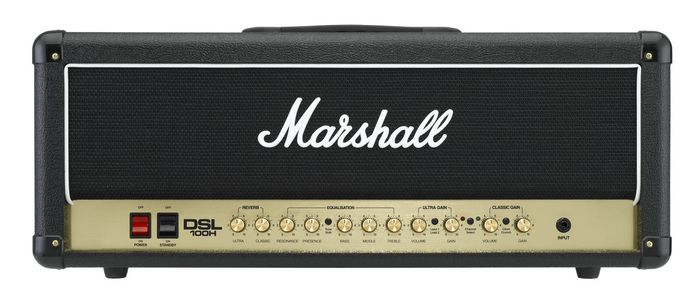
The Marshall DSL100H Guitar Amp Head has footswitchable Classic Gain and Ultra Gain channels allowing you to instantly shift between old-school and modern-rock sounds.
The Basics of Power Boosting
To boost your instrument's electronic signal, all amps use two circuits or stages—the preamp and the power amp. The preamp increases the signal from the instrument to a point where other electronics—such as EQ, effects loops, etc.—and the power section have something to work with.
The power amp then builds on the signal from the preamp to generate the serious wattage required to drive the speakers. Some amps also provide a line level output after the preamp section that can be used to plug the amp directly into a recording device or PA mixing board.
To Tube or Not to Tube
In the beginning, all amplifiers drew their power from vacuum tubes—the same technology used in most radios and televisions until the mid-1960s. Tubes created some of the great sounds that we associate with older music. But by the mid-’70s solid-state technology was winning much of the market with new amps that could produce great volume without any distortion and zero maintenance.
Distortion
When tubes are heated up and driven hard with big power supplies, they begin to distort the original signal creating an “overdriven” sound. Overdriven tubes produce a natural compression, meaning that relatively low signal levels end up sounding as loud as higher signal levels. This creates sustain, which allows electric guitar players to hold and/or manipulate a single note for a long time. The electric guitar sounds of hard rock and blues are built around distortion and sustain, so it was no surprise that tube technology didn't go away when solid-state amps hit the scene.
Preamp Overdrive
One significant advance in guitar amps in the 1970s was the master volume control. By controlling the power to the output stage of the amp, separately from the preamp, this knob allows you to overdrive the preamp stage. This allows you to create natural distortion without blasting the house down.
Power Section Overdrive
The richest distortion comes from amps on which both the preamp and power section are overdriven, which only happens when the the amp is turned up very loud. As a result, a lot of professional players prefer smaller tube amps they can crank up without drowning out their band. Often, smaller combo amp that can easily be overdriven are used with a microphone that feeds the distortion-laden guitar tone into the sound system.
Tube Dynamic Responsiveness
Many musicians find that high-quality tube amps with matched, high-quality tubes have a more lively and organic response to subtle changes in playing dynamics and technique. When you pick harder or softer, a good tube amp reflects the difference.
Tube “Warmth”
Another factor that many players prefer about tube amps is a subtle sonic signature, often referred to as “warmth.” Comparing solid-state and tube amp sounds, astute ears notice differences such as less brittle high frequencies and a rounder, more organic midrange and bass sounds.
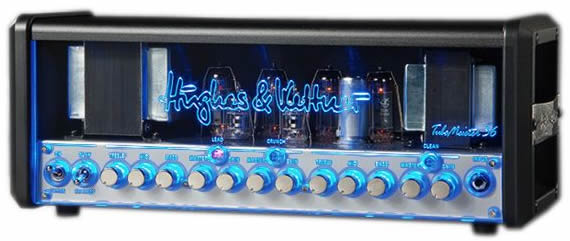
The Tubemeister 36H Guitar Amp Head from Hughes & Kettner combines classic tube sound with enormous tone-tweaking flexibility for instant access to 136 different tones.
Get the Best of Both Worlds
Since distortion is so much a part of modern guitar playing, designers have worked hard to create solid-state circuits that replicate tube-style distortion. Some employ digitally-created distortion, while others incorporate a tube in the preamp section to warm up the signal. The result is a broad range of very pleasing tones for solid-state amps. Many players—particularly professional guitarists—still prefer tube amps, but lower cost and zero maintenance have helped solid-state amps maintain their popularity.
So, Which Will It Be?
We can't make the decision for you, but most beginners go with solid-state amps because they're so affordable, portable, and versatile.
Acoustic guitar amps and modern keyboard amps, with their focus on clarity without distortion, rarely incorporate tubes. Modern bass amps with tubes are available, but solid state models are much more common, even among professionals.
Use the Proper Channels
Many amplifiers of all types offer multiple channels: unique signal paths through the amp that often use independent controls and effects to create different sounds. Most amps with multiple channels are also equipped to handle a footswitch that lets you select different channels without using your hands. You can set up each channel’s sound just the way you want it, then switch between them while you're playing without missing a beat.
Channel switching is a very handy feature for electric guitarists who move back and forth between loud, distorted lead tones and quieter, cleaner rhythm tones. Be aware that tube amps, which do not have a master volume control may have to be turned up very loud to generate much distortion. A distortion pedal between the guitar and amp can be an effective solution to this problem.
For acoustic guitarists, channel switching offers different effects for different songs and the ability to switch between lead and rhythm settings. Additionally, one channel of an acoustic guitar amp is often used to amplify a vocal microphone. Most of the amps in this category incorporate jacks for a guitar microphone and the signal from an acoustic guitar pickup.
Some bass amps may offer multiple channels. When they do, the second channel can be used for special effects like slapping or distorted tones.
Multiple channels on a keyboard amp are typically used to accommodate the outputs of various keyboards, drum machines, etc. employed in the same performance.
What’s My Wattage?
The measurement that's generally used to indicate the power of an amplifier is wattage. This is a measure of the amount of electrical power output to drive the speakers. Generally speaking, for a guitar or keyboard amp 1 to 30 watts is considered a small amp, 30-60 watts is deemed midsized, and more than 60 watts is considered large. Bass amps require more wattage to drive larger speakers.
Unfortunately, manufacturers calculate and report wattage in different ways. Compounding the problem, the manner in which different speakers respond to wattage varies. This makes amp power a slippery subject. To help you sort through it all, here are a few guidelines:
- Higher wattage roughly indicates louder sound within the same type of amplifier.
- Tube watts are generally louder than solid-state watts, particularly in the case of Class A amps, in which five watts can generate as much sound as some 40-watt solid-state amps produce.
- A more powerful amp gives you more freedom to control your sound and be heard over the other musicians without pushing your amp out of its optimal operation range.
- A critical feature of any amp bought primarily for practice is a headphone jack, which mutes the speaker and allows the player to hear an amplified signal without disturbing others.
With Great Power...
There are many factors affecting whether a particular amp will be loud enough for a given situation. Among other things, you have to factor in the type of music you play, how many instruments are in the band, how loud the drummer is, whether there are horns, the size of the spaces you plan to play on, and the placement of the amp.
Fortunately, if you are going to play in a very large hall or stadium, the venue will generally have a PA adequate to produce the sound needed for the space. You can just mic your amp or connect it via a direct injection box (DI) and run it through the house PA system.
- For solid-state technology a 40-watt guitar or keyboard amp driving a 10" speaker is loud enough for most rock jam sessions. However, it might not be adequate in a band with a loud drummer.
- Almost any guitar or keyboard amp with at least 60 watts and one 12" speaker should work for all but the loudest situations.
- A 30W Class A tube guitar amp is loud enough for a full rock band in most cases.
- Bass amps have to be more powerful to be heard. A 60W solid-state bass combo may be adequate for smaller spaces and jams. However, louder environments may require a 200W amp driving four 10” or two 12” speakers.
Cause an Effect!
Musicians can add a myriad of individual effects by connecting foot-controlled effects devices (often referred to as stompboxes), or multi-effects processors that plug into their signal chain. However, many amplifiers also have built-in effects, some of the most common being:
Reverb
It produces the echo-like sounds of an amp output bouncing off the walls of a large hall with hard walls and no carpet. Analog reverb effects are usually created mechanically through the use of a spring or plate that reverberates in response to the amp’s output. Many solid-state amps have digital reverbs that emulate this effect.
Tremolo
Some vintage amps also have tremolo built in, which rhythmically varies the volume.
Equalization (EQ)
Most amps include EQ sections, generally in the form of several controls that each boost or cut a particular frequency range. The treble and bass controls on a home stereo are an example of a two-band EQ. Many amps add middle or low-middle and high-middle controls as well. Some amps have graphic or parametric EQs that divide the amp’s output into more frequency bands allowing for more nuanced tonal tweaking.
Digital Effects
Many modern amps have digital effects built in. Effects such as distortion, reverb, echo, chorus, flange, phase, pitch shift, autowah, and others can be accessed from the front controls on the amp, and they can usually be saved in presets for easy recall. You can set up several effects at once, then save your settings and return to them instantly when you select that preset. Usually, there are factory presets built in as well.
Effects Loop
Many amps include an effects loop that allows external effects to modify the signal between the preamp and the power section. You simply run a patch cable from your effects loop output to the input of the effects box. Another cable then connects the output of the effects back into the input on the effects loop, sending the signal to the power section.
Get the lowdown on all kinds of effects boxes with our Guitar and Bass Effects Buying Guide.
Speakers: Where the Rubber Meets the Road
Not all amp speakers are created equal. The quality of the speaker(s) your amp runs through is a critical part of the tone equation. Generally, more expensive speakers will be heavier and have more sophisticated construction. Better speakers provide a more desirable coloration to an amplifier’s tone, enhancing or damping various frequencies in the sound. The type of coloration you like depends a lot on the kind of music you play. Metal and jazz players, for example, will rarely desire the same types of speakers. Here’s a quick rundown of speaker-amp pairings:
- 8" speakers will generally only be found in very small practice amps.
- 10" speakers are usually found in practice amps or combined with other speakers for larger amps.
- 12" speakers are standard in most performance amps and in cabs designed for use with amp heads.
- 15" and 18" speakers are usually found in separate cabs and are used almost exclusively with bass amps.
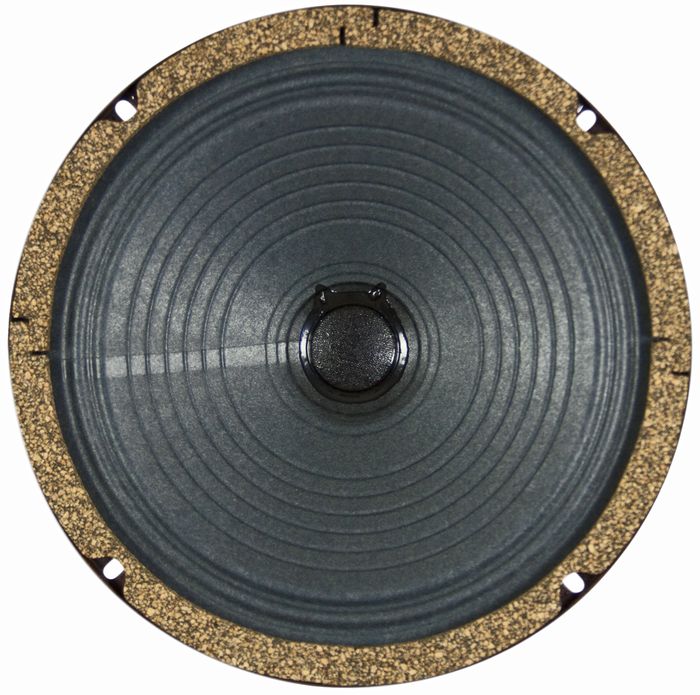
The Warehouse Guitar Speakers G8C American Vintage 8” Speaker is an inexpensive way to upgrade guitar practice amps.
More to Explore
This is only a brief overview of the many features found on modern amplifiers, but it should be enough to get you started browsing the Musician's Friend catalog or our website to find the amp that's right for you. We carry models from all the great instrument amplifier brands, including Marshall, Fender, Vox, Peavey, Roland, Randall, Gallien-Krueger, Alesis, Rivera, Line 6, Ampeg, Pignose, SWR, Drive, Crate, Hughes and Kettner, Gibson, THD, Epiphone, Traynor, Behringer, and Rogue.
After reading this guide, if you’re still not sure which amp is right for you, we invite you call to one of our friendly and knowledgeable Gear Heads at (877) 880-5907.







































































































































